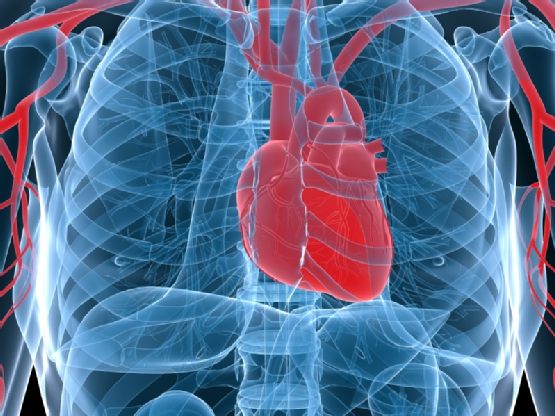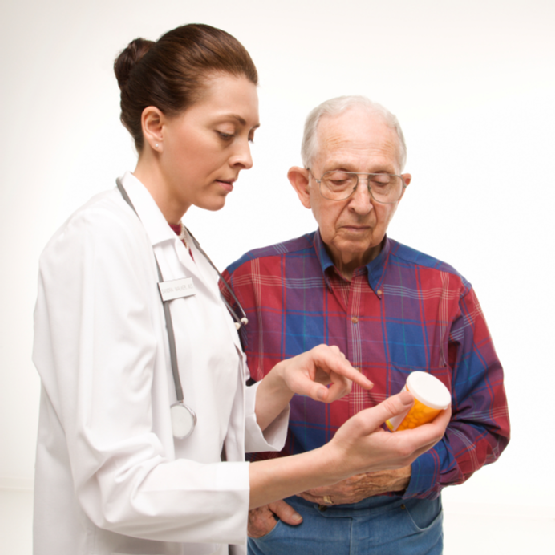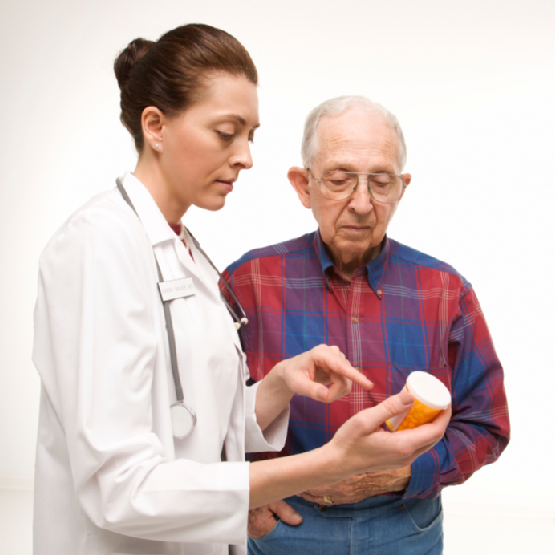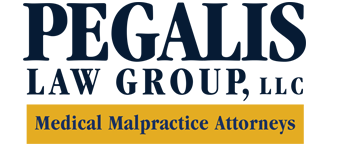-
Breaking News: FDA Asks Doctors to Limit Acetaminophen
The US Food and Drug Administration (FDA) is asking healthcare professionals to stop prescribing combination prescription pain relievers that contain more than 325 mg of acetaminophen per tablet, capsule, or other dosage unit, citing the risk for liver damage.The action targets prescription analgesics that contain both acetaminophen and another ingredient, typically opioids such as codeine, oxycodone, and hydrocodone. Some of these combination products now have as much as 750 mg of acetaminophen per dose.
In a statement the FDA said, “There are no available data to show that taking more than 325 mg of acetaminophen per dosage unit provides additional benefit that outweighs the added risks for liver injury.”
“Further, limiting the amount of acetaminophen per dosage unit will reduce the risk of severe liver injury from inadvertent acetaminophen overdose, which can lead to liver failure, liver transplant, and death,” they added.
The FDA said cases of severe liver injury with acetaminophen have occurred in patients who took more than the prescribed dose of an acetaminophen-containing product in a 24-hour period; took more than 1 acetaminophen-containing product at the same time; or combined alcohol with acetaminophen products.
The FDA said it will address over-the-counter (OTC) pain relievers and cold, sinus, and cough medicines that contain acetaminophen in a separate regulatory action. Normally, the maximum level allowed for these products is 500 mg, although a few extended-action pain relievers that are taken less frequently can go up to 650 mg.
“Many consumers are often unaware that many products (both prescription and OTC) contain acetaminophen, making it easy to accidentally take too much,” the FDA warns.
For a free legal consult on medical errors you suffered, call (516) 684-2900.
-
How Can Doctors Limit Medical Mistakes?
When a patient undergoes surgery, he or she entrusts the entire surgical team with his or her safety and well-being. Unfortunately, surgical mistakes, including operating on the wrong body part or operating on the wrong patient, are not uncommon in hospitals across the country. One of the main reasons why these kinds of errors occur is a lack of communication among different members of the surgical staff.
This video provides an inside look at a Connecticut hospital’s efforts to reduce surgical errors and enhance patient confidence. Using a “safe surgery checklist,” surgeons and nurses clearly mark the patient’s surgical site and provide a step-by-step overview of the procedure. Since its inception, the “safe surgery checklist” has significantly reduced complications at this Connecticut hospital.
Based in Long Island, Pegalis & Erickson is one of the nation’s premiere law firms. Call (516) 684-2900 to speak with one of our medical malpractice lawyers.
-
What Is Heart Disease?

Heart disease is a general term referring to any disorder of the heart. Over one quarter of all deaths in the United States are caused by heart disease, making it the leading killer of Americans. While some kinds of heart disease cannot be prevented, many kinds can be prevented.
Common types of heart disease include heart failure, when the heart doesn’t pump as well as it should; arrhythmia, when the heart beats too slow or too fast; and stenosis, when the heart valves don’t open wide enough due to narrowing. Heart disease can lead to a heart attack, which occurs when a blood clot blocks the flow of blood to the heart. Lifestyle changes, such as quitting smoking, getting regular exercise, and eating more fruits and vegetables, can help reduce the risk of heart disease. Surgery and medication can help those with heart disease live long, happy lives.
Not all medical treatments for heart disease are successful. If you’ve been injured as a result of a medical professional’s negligence, you may be a victim of medical malpractice. To find out what really happened call Pegalis & Erickson of Long Island at (516) 684-2900.
-
Article by brave physician highlights her own mother’s hospital stay filled with avoidable mistakes due to a culture lacking safety.
This brave article by a young physician highlights her own mother’s hospital stay as being filled with avoidable mistakes and an absence of safety.
Learning to Care about Patient Safety
Elaine Besancon, MD
Most of us can recall a particularly memorable patient who inspired or altered our career path. My patient was a 63-year-old woman with inflammatory breast cancer who had been in remission and asymptomatic until her family suddenly couldn’t wake her one morning. She was admitted to the hospital and diagnosed with meningeal metastases. Her husband, son, and daughter were by her bedside all day, nearly every day. Despite their best efforts to be vigilant and the fact that she was in a “top 100” hospital, her care was hardly error-free, and the family’s grief was compounded by her frequent falls, a black eye from an errant stethoscope, several severe drug side effects (one of which left her nearly comatose for a month before the offending drug was recognized and discontinued), one narrowly avoided unnecessary neurosurgical procedure, and the administration of an incorrect intrathecal chemotherapy drug.
Some days brought nightmarish scenes that further emphasized how difficult it was to keep such a complex patient safe. One morning I walked in to find her hands and forehead covered in blood. While hallucinating and between nursing checks, she had pulled out every cranial staple from her recent neurosurgery by hand, an event that put her at great risk for infection. Needless to say the scene also shook the family’s confidence in the care team. Though the medical team tried everything to get her stable enough to go home, the severity of her illness, combined with the complications of numerous adverse events, kept her in the hospital, where she slowly died over the course of 6 months.
The patient I’ve described was my mother. I was the daughter who sat by her bedside for months, watching the challenges of caring for a complicated patient through the eyes of a family member rather than those of a medical student. Of all the subjects I had been taught during medical school, the one I felt was most important during my mother’s hospitalization was also one I’d learned least about implementing in my daily practices: patient safety. Of course we’d had some instruction in the subject—we’d had several lectures on concepts like “Toyota Lean” and the “swiss cheese model” of error occurrence. But these concepts had often seemed too business-oriented or administrative to be directly relevant to trainees who chose medical school because of a love of science and patient care.
Even if we had been inspired to become more involved in safety practices, they were always discussed in generalities with little instruction about how to adopt them other than by being vigilant, writing thorough sign-out notes, and perhaps discussing appropriate patients at morbidity and mortality conferences. Following my experiences with my mother, I attempted to figure out how to report errors or near misses I witnessed in our hospital while on third-year rotations. But I found that, as a medical student, it was impossible for me to report an error through the usual channels—our computer system wouldn’t even accept it.
Treating patient safety as an afterthought in the medical school curriculum invites students to continue to treat it that way after medical school and into their careers. But medical school is the perfect time to emphasize patient safety and quality improvement. Medical students have not yet been desensitized to the inefficiencies and unsafe practices that many seasoned health care professionals not only tolerate but are often not even consciously aware of. Learning patient safety must be a hands-on experience, however, for it to truly resonate with students.
Though I am now passionate about the topic, I rarely thought much about it until my mother’s hospitalization, despite the lectures and tutorial cases I’d had in medical school. Hypothetical cases may be acceptable for an introduction to the field, but, just as hypothetical cases in pathophysiology are supplanted by experience with real patients for which there is no substitute, patient safety education should not be relegated to the realm of the theoretical.
The 2011 ACGME requirements mandate more direct involvement in patient safety for residents [1], which is an important step in the right direction. Similar training can easily be extended to students as well. Though some have cited the admittedly numerous barriers to curricular reform [2], not the least of which are funding and staffing issues, basic safety experience for students need not be expensive. Interventions as simple as allowing medical students to report the errors and near misses they witness and sit in on preexisting safety committee meetings would cost little but go a long way towards exposing trainees to the importance of safety and quality improvement efforts.
It also became clear to me during my mother’s hospitalization that the frontline caregivers were the individuals most likely to notice areas for improvement in the day-to-day operations of the hospital. At her institution, this included physician’s assistants and nurses; at my current institution, it also includes residents and medical students. During my mother’s hospitalization, these frontline caregivers were far more aware of areas in the hospital that needed improvement than were members of the patient safety committee (mostly attending physicians, department leaders, and administrators). Unfortunately, there was a large disconnect between these two groups.
A factor that contributed to my mother’s many falls during her periods of delirium was that the cords for the bed alarm and the chair alarm were identical and only one could be plugged in to the monitoring device at a time. This meant that there was no way for a busy nurse to assess which alarm was active with a quick glance—one would have to stop and trace the cord all the way back from the monitor to the chair or bed to confirm that the correct alarm was plugged in. Many of the nurses knew this, and several easy fixes leap to mind for this problem, but the nurses had no clear procedure for informing those who could do something about the problem, nor did they seem to feel that it was their responsibility to find a way do so. I’m in no way faulting the nurses in particular for this failing—what I wish to say is that issues of safety, until they resulted in a catastrophic outcome, often fell outside of nearly everyone’s job description. To remedy this, the culture of safety needs to extend not just to medical trainees, but also to any hospital employee who interacts with patients or observes patient care. All of these individuals should have easy access to a mechanism for reporting safety concerns.
There is one other important group of individuals that is almost never included in calls for more inclusive safety efforts: family members. Family members can find it difficult to speak up when we have safety concerns. Even as a medical trainee, I worried about asking questions of my mother’s care team. What if I annoyed them? What if we became labeled a “difficult family”? Would my mom’s care suffer as a result? Often, especially early in her hospital course, I opted not to voice any safety concerns because of fears like these.
I’ve heard many other reasons that family members don’t speak up—we feel it’s not our place, that the medical team is too busy, or that the staff would surely have noticed if something were wrong. Caregivers often allow—or even encourage—these attitudes to persist. As a result, family members become involved in the safety process only when they think something disastrous has happened and file an incident report, a complaint, or a lawsuit.
It is undeniable that rounds are speedier when family members do not ask questions or interject comments during our presentations. However, because nationally standardized medical records systems are still far in the future and frequent handoffs and cross-coverage have become unavoidable realities, patients’ family members can be the best sources of continuity. Often they’ve been present for every ED visit, outside hospital stay, and outpatient appointment. A couple of months into my mother’s hospital stay, details like her need for a much lower dose of phenytoin than the average patient had been buried deep within her chart. Frequently, all that kept a harried covering physician from administering an overdose when she was seizing was our family’s intervention. Several times when we weren’t there overnight, an excessive dose was given and Mom would sleep for days. Though this is an extreme example, more purposeful involvement of the family has the potential both to reduce errors and increase family satisfaction if it is clear that physicians are attempting to address their concerns.
As a family member, I found the errors that affected my mother to be the most distressing part of her illness. Now, as a physician, worrying that I will commit an error that causes my patients to suffer is a powerful motivator for my patient safety work. But as much as I hope I can make a difference in my institution, a culture of safety won’t come from a few individuals who feel strongly about these issues working in each hospital. Not until safety is an emphasized part of everyone’s job description can we hope to reduce dramatically the great number of preventable errors taking place in our hospitals. I hope that in the future we can design novel educational interventions that convince medical personnel to prioritize safety issues, so that they won’t have to be convinced, as I was, by watching patients like my mother suffer.
Author: Elaine Besancon , MD, graduated from Harvard Medical School and is an internal medicine intern at Brigham and Women’s Hospital in Boston. Her research interests include patient safety and quality improvement. Copyright, American Medical Association Journal of Ethics, Virtual Mentor.org, Sept. 2011 References Accreditation Council for Graduate Medical Education. Common program requirements. http://www.acgme.org/acwebsite/home/Common_Program_Requirements_07012011.pdf. Accessed June 1, 2011. Nash D. Today’s new physicians are unable to improve patient safety. KevinMD . http://www.kevinmd.com/blog/2010/08/todays-physicians-unable-improve-patient-safety.html. Accessed June 1, 2011.
-
Why Do Medication Errors Occur?

Medication error refers to any mistake in prescribing, dispensing, or administering medicine. According to the Mayo Clinic, medication errors injure more than one million people in the United States each year. Luckily, patients can lower their risk of experiencing a medication error by taking an active role in their health care.
Medication errors can happen in a variety of places, including a patient’s home. However, the majority of medication errors occur in doctors’ offices, hospitals, and pharmacies. Some of the leading causes of medication errors in hospitals include poor communication between health care providers and sound-alike medication names or abbreviations. Whenever a patient starts a new medication, he or she should as the doctor for an explanation, including asking for the name of the generic variation. The patient should also research the recommended dosage along with any foods, drinks, or other medications that should be avoided while taking this new medicine.
Call (516) 684-2900 to schedule a consultation with Pegalis & Erickson of Long Island. Our medical malpractice attorneys are dedicated to protecting the rights of seriously injured individuals and their families.
-
What Is Birth-Related Medical Malpractice?

Birth-related medical malpractice refers to a situation in which a doctor, nurse, or member of the medical staff failed to use reasonable care when handling a pregnancy or delivery. Birth-related medical malpractice can cause physical injuries to either the mother or the child.
Birth injuries
Medical malpractice can occur both during delivery and prior to the delivery period. A common example is if a doctor fails to monitor the baby’s oxygen levels either before or during the delivery. Other instances of medical malpractice may include for failing to control the mother’s blood loss after the delivery period, causing injury or death to the mother. If a doctor’s failure resulted in injuries to the infant, then the parents can bring a lawsuit on behalf of the newborn, asking for damages like cost of suffering and loss of enjoyment of life, and compensation for future critical medical costs and therapies.
Birth-injury claims and medical malpractice lawsuits involve complex medical and legal issues, so it’s important to seek the help of a medical malpractice attorney. Pegalis & Erickson has been representing seriously injured individuals in Long Island for more than 40 years. Call (516) 684-2900 to schedule an appointment.
-
What Are the Most Common Medical Errors that Occur in Hospitals?

When most people visit the hospital, they are seeking treatment for an injury or illness. Unfortunately, a visit to the hospital can be more dangerous than the injury itself, as a 2012 CNN report claims that medical errors kill more than 250,000 people per year in the United States. Here’s a look at some of the most common and dangerous medical errors in American hospitals.
Misdiagnosis
The most common type of medical error is when a nurse or doctor fails to properly diagnose a patient. Failing to identify the correct diagnosis can lead to a delay in treatment, which can sometimes have deadly consequences. Unfortunately, emergency rooms are prone to overcrowding. The longer a patient waits in an ER, the more likely he or she will experience delayed diagnosis. One way for patients to speed up treatment is by calling their regular physicians and having them call the emergency room.
Medication mistakes
According to Psychology Today , more than 60% of patients in the hospital don’t receive their regular medication while they are under hospital care. Other medication errors include giving patients the wrong medications or failing to give patients the proper dosage of medication. This includes not only over-doses but also under-doses both of which can cause serious
Acquired infections
The Centers for Disease Control and Prevention estimates that 1.7 million people acquire infections from hospitals every year. Common hospital-acquired infections include pneumonia, surgical infections, urinary infections from catheters, and bloodstream infections from IVs. These infections often involve very strong forms of bacteria that are resistant to most antibiotics.
If you’ve suffered an injury or illness as a result of improper hospital care, contact Pegalis & Erickson at (516) 684-2900. Our Long Island medical malpractice attorneys have been representing seriously injured people and their families for more than 40 years. Additionally, we have the distinction of receiving two of the highest medical malpractice jury verdicts in the state of New York.
-
Seeking stories for medical error education
PULSE of NY is a grassroots, nonprofit, 501(c)3 organization working to improve patient safety and reduce the rate of medical errors. They seek personal stories about medical errors or confusion w/ a medical diagnosis to use to educate clinicians and the public, to improve health care. Anyone may submit a story for consideration; patient, family member or clinician. PLEASE SEE THIS LINK FOR DETAILS http://www.patientsafetypartners.org/stories.html Stories should be under 350 words, submit to pulse516@aol.com through February 25.

Recent Posts
Popular Posts
categories
- Uncategorized
- Infographic
- Patient Safety
- Patient Health
- Stillbirth
- Birth Injuries
- Medical Malpractice
- Medical Negligence
- Event
- Erb's Palsy
- Injury
- ER
- Video
- Cancer Misdiagnosis
- Medication Errors
- Cerebral Palsy
- Medical Negligence Lawyer
- Anesthesia Injuries
- Brachial Plexus
- Prostate Cancer
- About Us
- Men's Health
- Skin Cancer
- Breast Cancer
- Misdiagnosis
